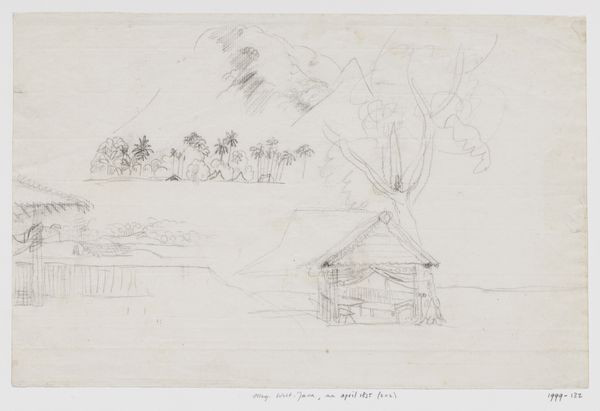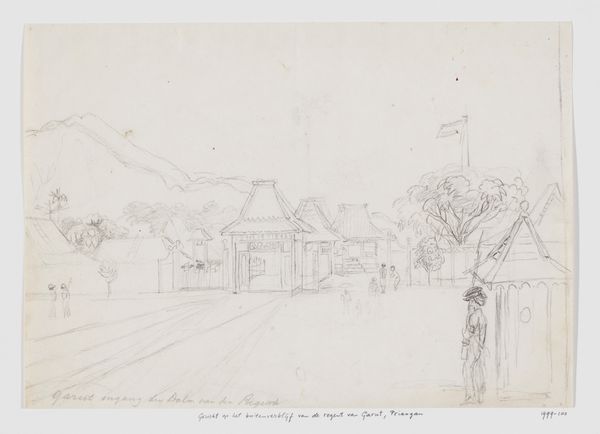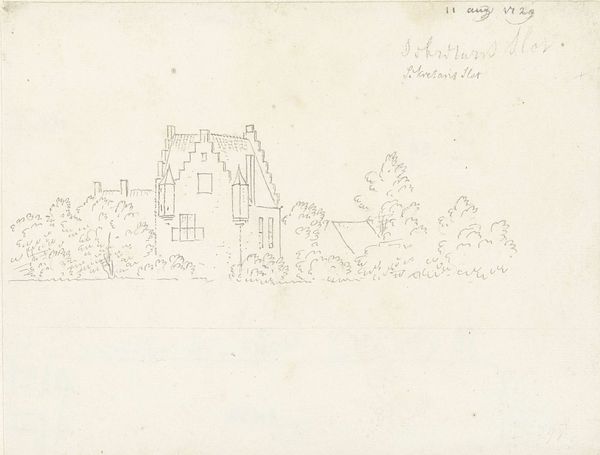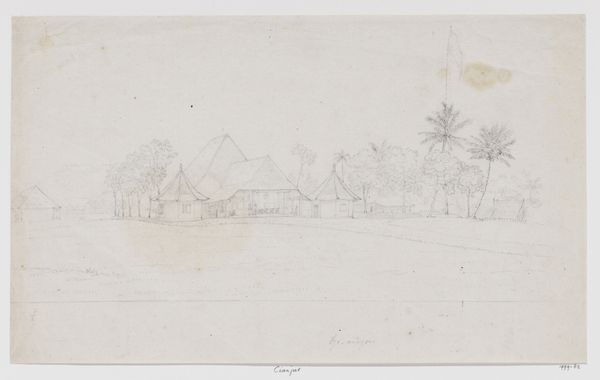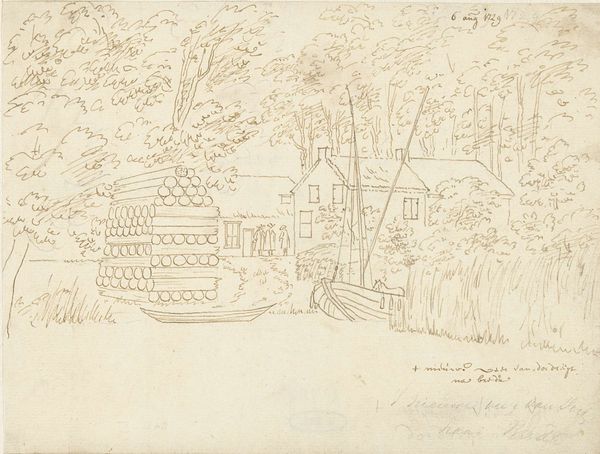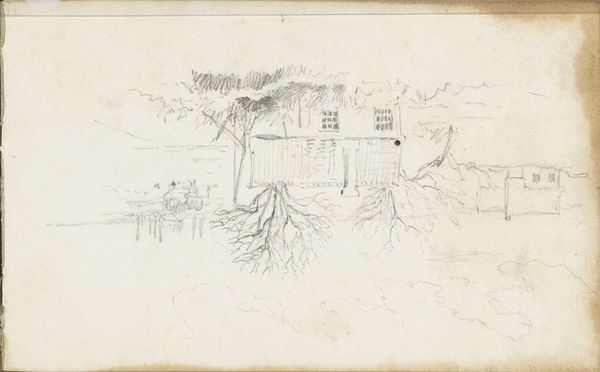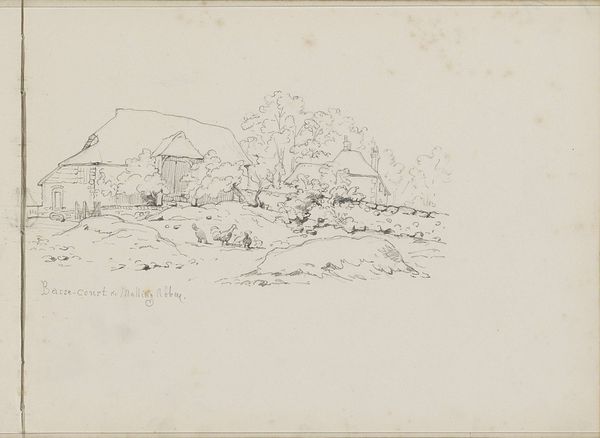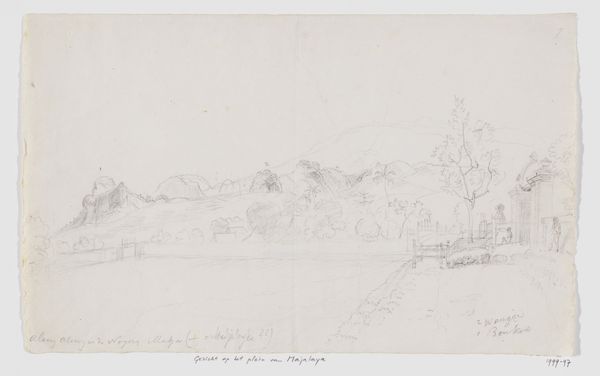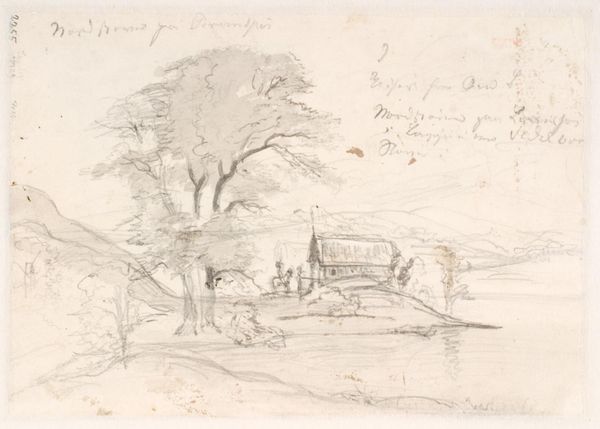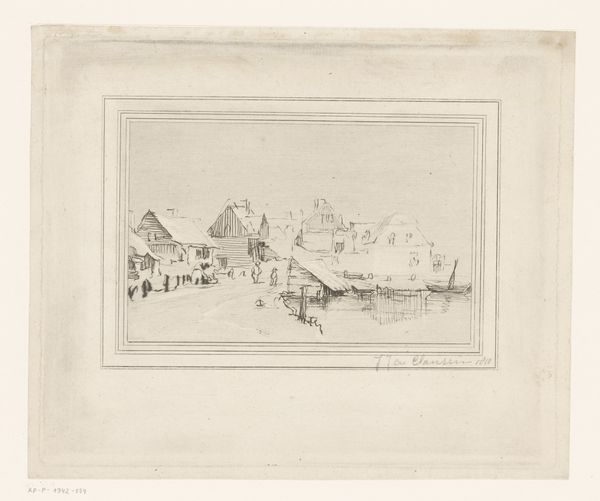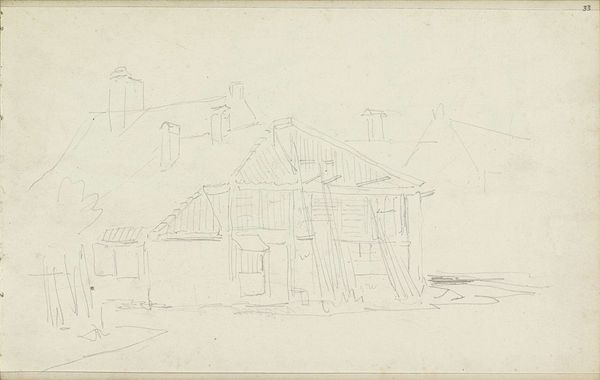
Gezicht op een nederzetting op de oostkust van een van de Aru eilanden, Zuidoost-Molukken 1824
0:00
0:00
adrianusjohannesbik
Rijksmuseum
drawing, paper, pencil
#
drawing
#
landscape
#
etching
#
paper
#
pencil
Dimensions: height 186 mm, width 317 mm
Copyright: Rijks Museum: Open Domain
Curator: This pencil and paper drawing by Adrianus Johannes Bik from 1824 offers "A View of a Settlement on the East Coast of One of the Aru Islands, Southeast Moluccas," as the title tells us. Editor: It feels unfinished, almost ghostly. The thatched roofs of the buildings loom large, and the pale rendering lends an ethereal quality to the whole scene. Curator: Considering Bik's background as a colonial administrator, we should examine how the image participates in the visual construction of the “exotic” and the subjugation of indigenous populations in Southeast Asia during the period of Dutch colonial rule. Note the artist's eye and, importantly, his potential biases as an outsider documenting a culture he may not have fully understood. Editor: What strikes me are the symbols related to dwelling and community: those angular roofs, repeated across the landscape, are not just architectural features but also indicators of established life and the structures that allow people to thrive. Do you see the small figure, slightly apart? He seems poised between land and water. Curator: I agree; that figure draws us to a pivotal intersection of trade, cultural exchange, and also, inevitably, exploitation. The artist's meticulous attention to detail in rendering the boats, for example, highlights their centrality to the economic and social systems. However, there’s an unsettling absence of vibrant life; the composition almost serves to "freeze" a moment, thus enabling a distant gaze for the colonizer’s perspective. Editor: Yes, that suspended quality invites deeper consideration. Even though the materials are simple - pencil on paper - the image captures something profound. The sketch-like quality is really important; what appears to be a faithful depiction also hints at a more fleeting impression that underscores impermanence. What appears at first like objective documentation becomes an observation. Curator: Absolutely. The act of observing inherently transforms what is observed, which leads to questions regarding our own positionality as viewers interpreting this image across centuries. Editor: Reflecting on it, I see a potent depiction of humanity anchored in place. Even its barest presentation can serve as a testament to shared experiences. Curator: And through understanding the nuanced cultural and historical landscape that underpins this drawing, it's impossible to overlook those echoes that reverberate through time.
Comments
No comments
Be the first to comment and join the conversation on the ultimate creative platform.
